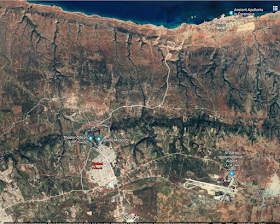My schedule briefly had me working an overtime shift next week, so as long as that prospect was before me, I was working on September of 1949. (Avro 707!) But I've also been nibbling at the edges of the early money problem, so when the totally unnecessary shift was struck from my schedule, I had something to blog about. Also, a chance to highlight the work of some fine young female scholars who are a lot more deserving of tenure than some I can think of.
 |
| Courtesy Ephraim Stern |
We are once again delivered into the hands of Biblical archaeologists. In 1995, a team excavating in "southern Phoenicia/northern Israel" found an amphora containing 20lbs of silver. Conditions weren't particularly kind to this collection of pieces, deposited in linen money bags and long since agglomerated by oxidation. The Ein Hoffetz hoard, discovered last year, is a bit prettier:
It's still hack silver and ingots, but the taphonomy is at least clear. It's not coinage, that's for sure. (For the purposes of the elaborate archaeometallurgical analysis, it is, in fact, important that the Dor hoard be recycled jewelry, it turns out. Otherwise, it's got too much gold alloying the silver.) These collections have achieved some notoriety for the usual, discouraging reasons. The Bible describes joint expeditions to "Tarshish," sponsored by Hiram of Tyre and King Solomon, and the traditional Biblical chronology would place these in the 900s, rather too early by the conventional narrative, which would push Phoenician-Tartessian interactions down closer to 700BC. Does cutting edge science vindicate the Biblical narrative and therefore etc? (I don't want to get into it, but the ideological goal of the research is obvious enough.)
Maybe. Lead isotope analysis (about which more below) shows the silver in the three recently discovered southern Phoenician hoards are sourced to the Taurus mountains of central Anatolia, the interior of Sardinia, and Iberia. The Phoenicians were obtaining silver from Sardinia from about 950BC and from Iberia before 800. Other considerations lead the authors to conclude that the Phoenicians introduced the cupellation method of producing silver in the west. And, incidentally, whoever the technicians were, they were better at it than the ones refining the Taurus ores.
The westward quest for metals is back on! And, converging with modern archaeology's distaste fort he traditional colonialist narrative, it is notable that the timeline puts the Phoenician presence in the west well ahead the earliest Phoenician colonies.





